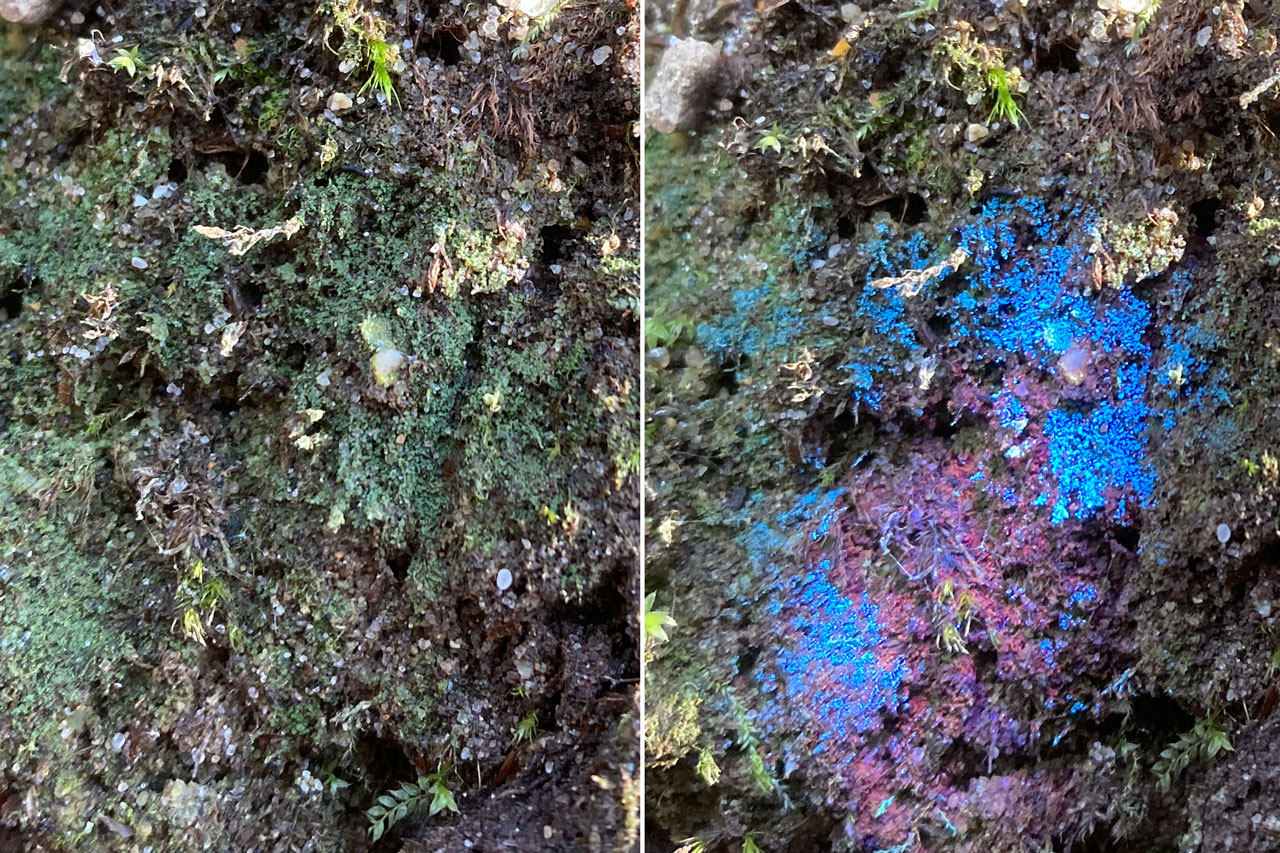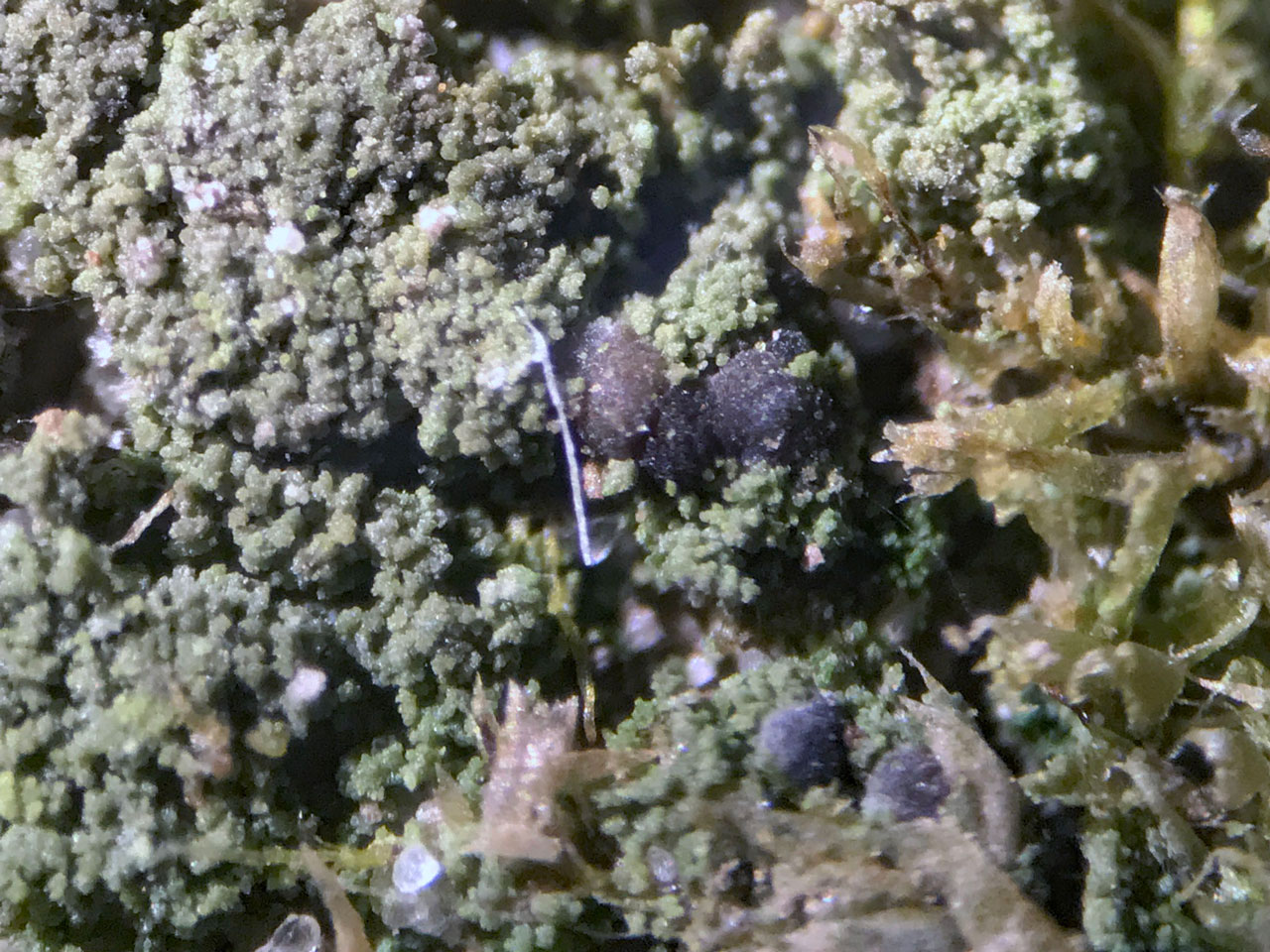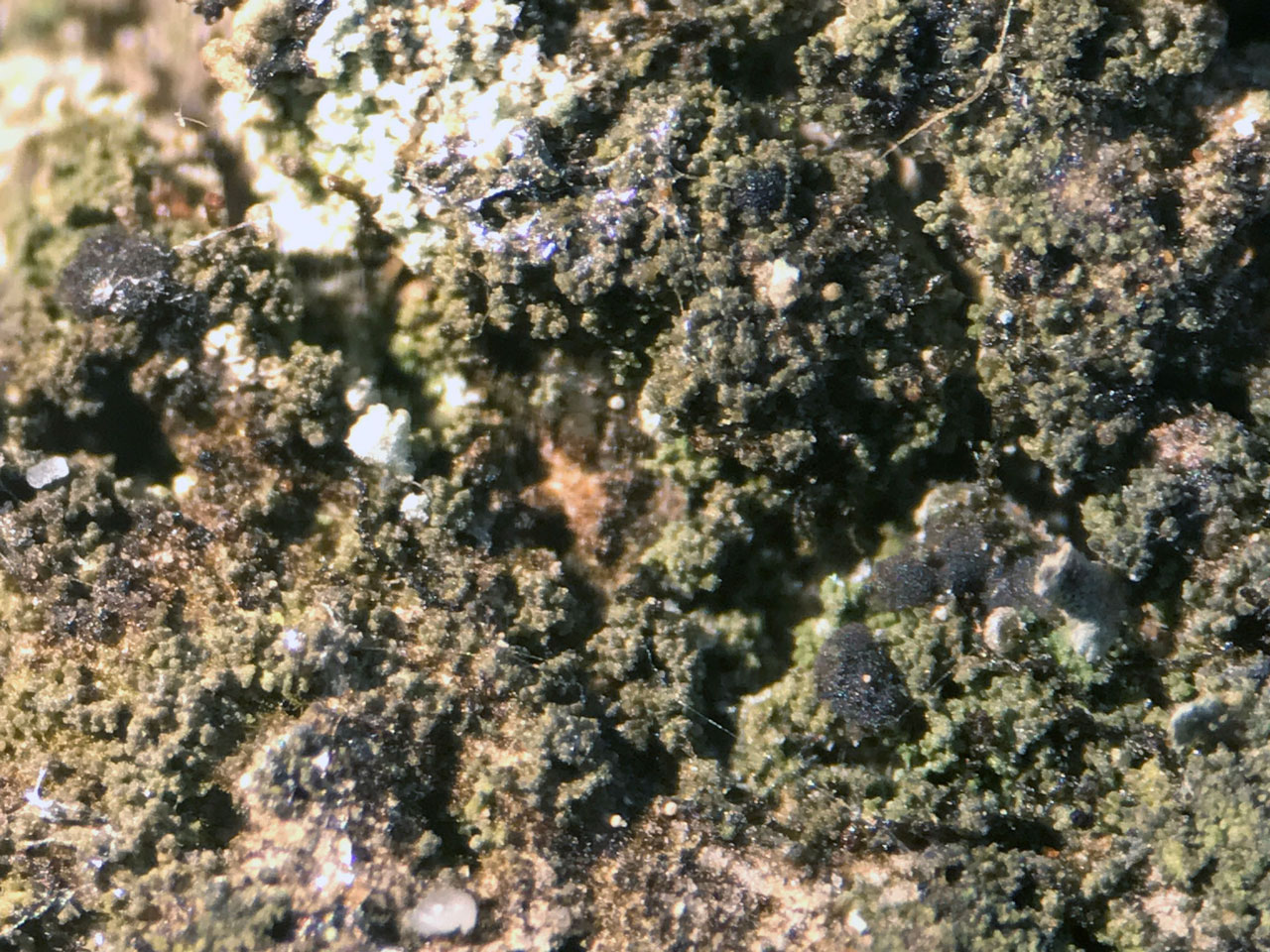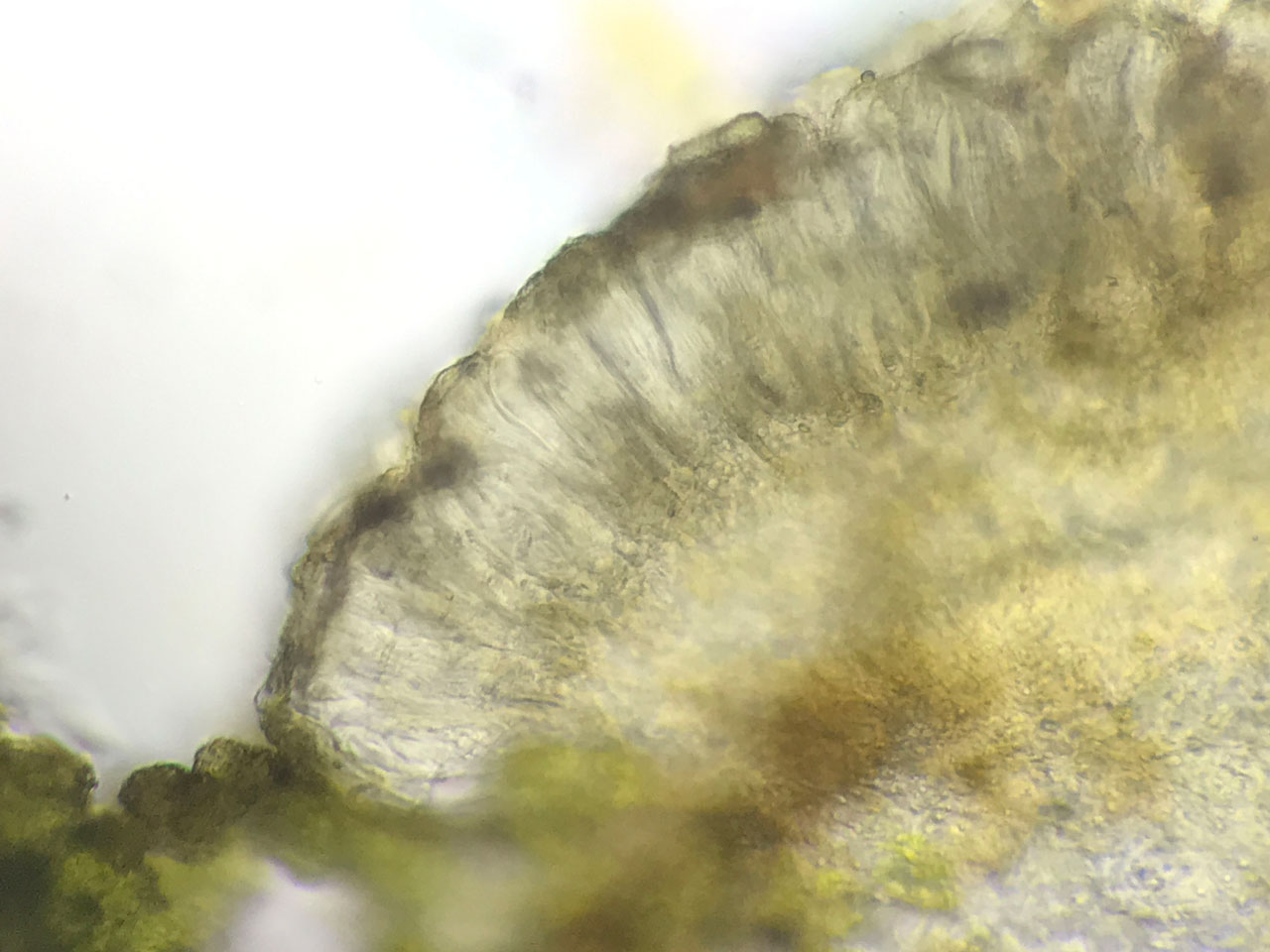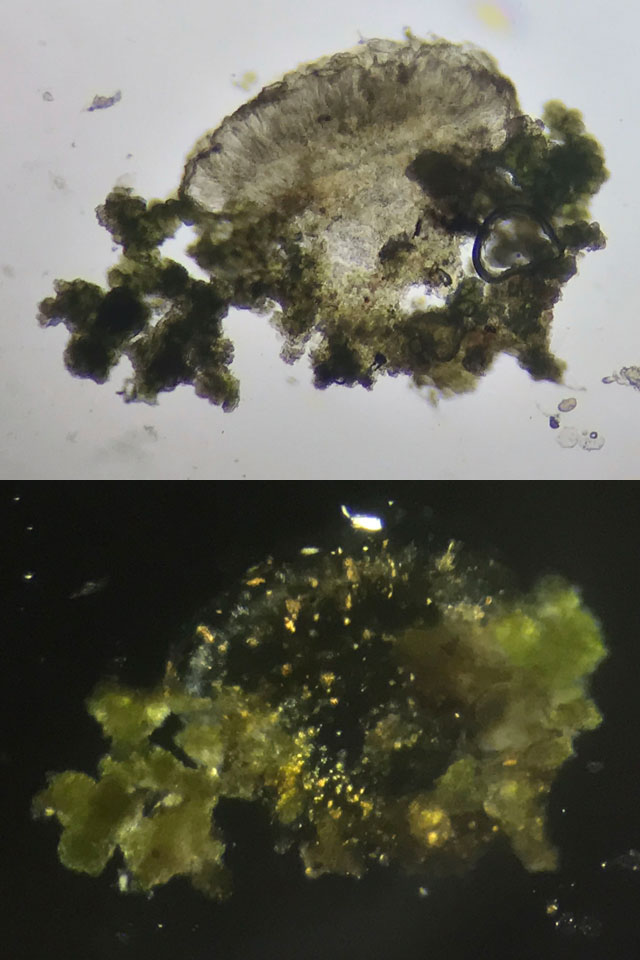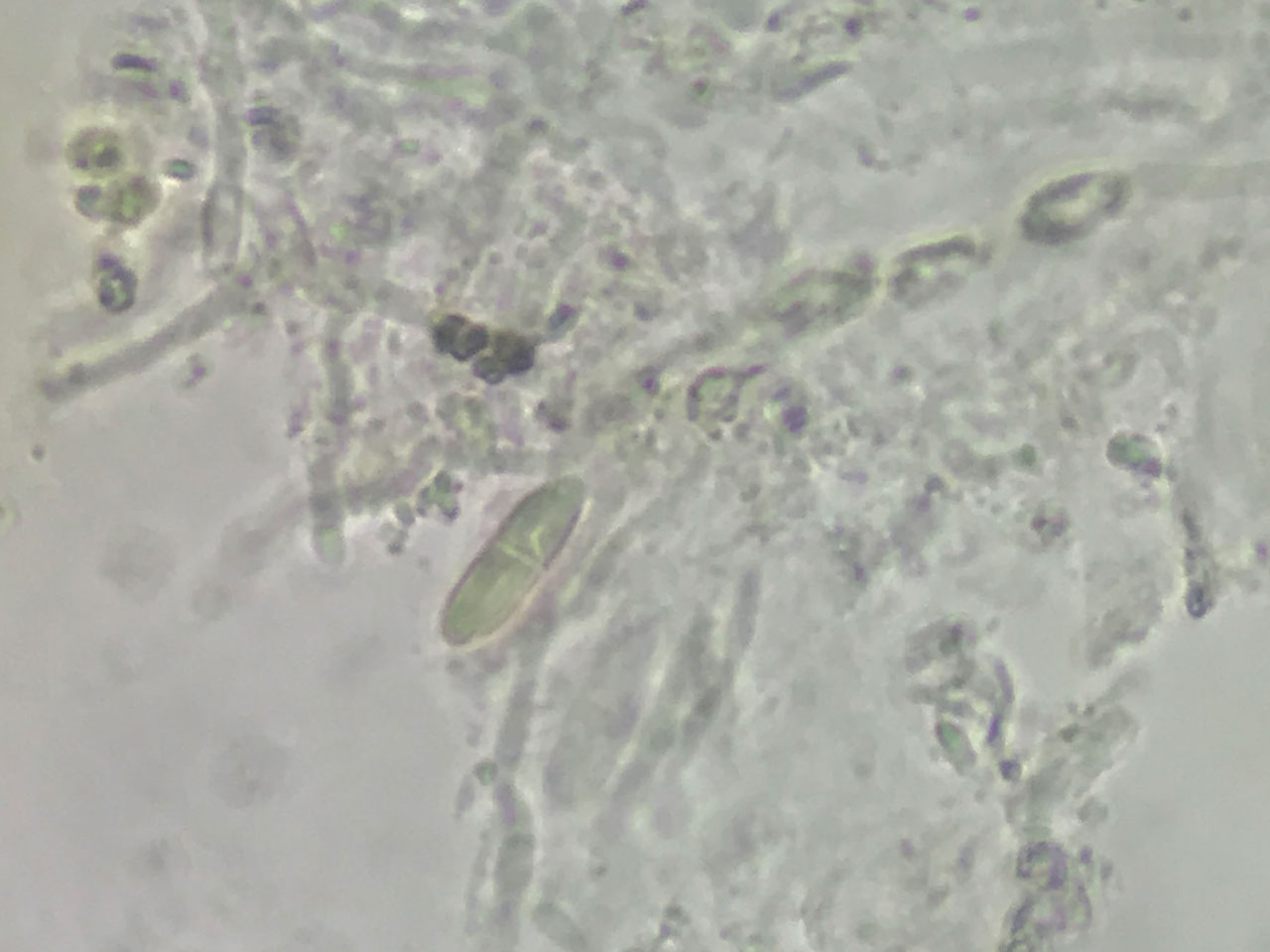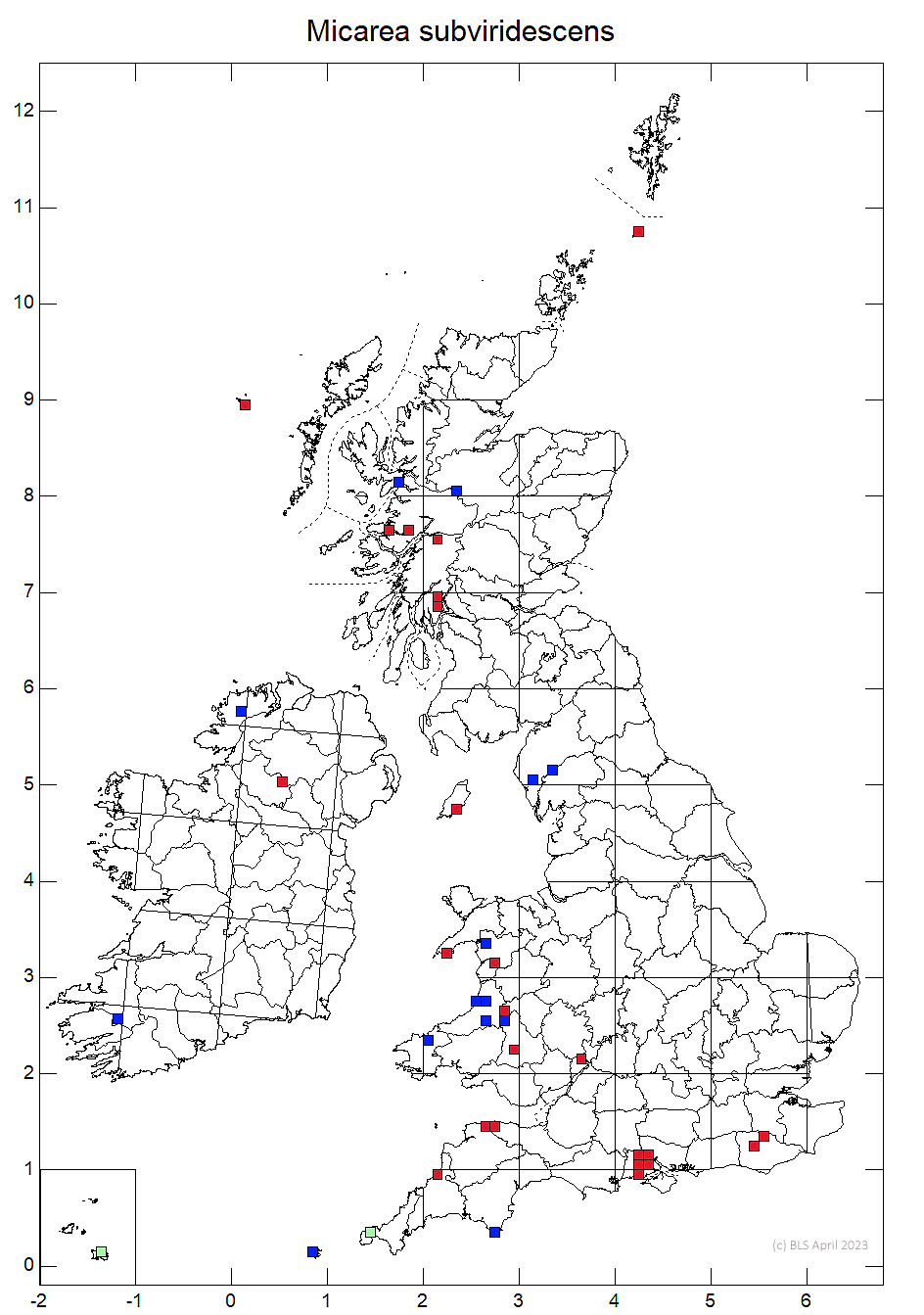Micarea subviridescens
Micarea prasina auct. p.p.
Found as dull green granular crusts on shaded patches of mildly acidic soil, typically in small gaps in moss mats and is infrequently fertile. As such it was very difficult to spot and, unsurprisingly, under recorded until the very bright blue-white UV fluorescence of the thallus was discovered. The fluorescence is so bright that this lichen can be located by scanning likely habitat with a UV torch, making recording this species much easier.
Thallus pale grey-green to bluish grey-green, leprose, of thinly scattered to usually densely aggregated, ± globose goniocysts; goniocysts 12–18 µm diam., sometimes coalescing to form granules 25–45 µm diam., densely packed with coarse crystals that are not soluble in K; some outer hyphae coated by greenish, K± violet pigment; photobiont cells 4–7 µm diam. Apothecia 0.1–0.4 mm diam., to 0.6 mm if tuberculate, convex to subglobose or tuberculate, immarginate, whitish, pale to dark grey, brownish grey, or blackish; true exciple poorly developed; epithecium colourless, dull straw and K– or dull greenish and K± violet; hymenium 45–70 µm tall; hypothecium colourless to dull yellowish; paraphyses 0.5–1 µm diam., to 1.5 µm diam. towards the apices, rather scanty, branched. Asci 45–60 × 10–14 µm. Ascospores 10–18 × 4–6 µm, ovoid-ellipsoidal to cylindrical, (0-)1- to 3-septate. Pycnidia not seen. Thallus and apothecia Pd–, K–, C–, UV+ bright blue-white (the greenish pigment is C± violet, K± violet, N± red) (prasinic acid by TLC).
Differs from Micarea micrococca s.l. and M. prasina in the thallus having a slightly bluish tinge and the somewhat taller hymenium, and larger asci and ascospores; easily separated from these species by the very bright blue-white fluorescence, combined with the bluish grey-green leprose thallus and the terricolous habitat. The fluorescence is so bright that this lichen can be located by scanning likely habitat with a UV torch. When sterile, it can also be mistaken for a Lepraria species (especially L. elobata).
On mildly acid soil of woodland banks, stream banks and root plates and amongst coastal rocks, more rarely on trunks of old Oak; occasional. Jersey, S. & S.W. England, Wales, W. Scotland (Argyll).

Likely to be extremely under-recorded, recent searches using UV light to detect the species have found it to be widespread but local in acid soil areas in Hampshire, The Weald and the Thames Basin.
A very under recorded species and likely widespread but local and not strongly threatened. It could, however, be reasonable assessed as Notable, as it seems very localised and patchy in its occurence and confined to semi-natural situations.
Cannon, P., Orange, A., Aptroot, A., Sanderson, N., Coppins, B. & Simkin, J. (2022). Lecanorales: Pilocarpaceae, including the genera Aquacidia, Byssoloma, Fellhanera, Fellhaneropsis, Leimonis and Micarea. Revisions of British and Irish Lichens 27: 1-48.
Text by Neil A Sanderson, based on Cannon et al (2022)
